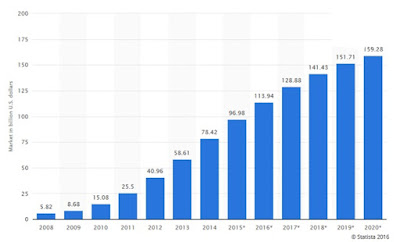Twitter Feed
From PC Break/Fix to CloudMASTER®
https://www.linkedin.com/in/stevendonovan It was late 2011 and Steven Donovan was comfortable working at SHI International Corporation, a growing information technology firm, as a personal computer break/fix technician. His company had been…
Is Data Classification a Bridge Too Far?
Today data has replaced money as the global currency for trade. “McKinsey estimates that about 75 percent of the value added by data flows on the Internet accrues to “traditional”…
Vendor Neutral Training: Proven Protection Against Cloud Horror Stories
Cloud computing is now entering adolescence. With all the early adopters now swimming in the cloud pool with that “I told you so” smug, fast followers are just barely beating…
Cognitive Business: When Cloud and Cognitive Computing Merge
Cloud computing has taken over the business world! With almost maniacal focus, single proprietors and Board Directors of the world’s largest conglomerates see this new model as a “must do”.…
Government Cloud Achilles Heel: The Network
Cloud computing is rewriting the books on information technology (IT) but inter-cloud networking remains a key operational issue. Layering inherently global cloud services on top of a globally fractured networking…
System Integration Morphs To Cloud Service Integration
Cloud Service Brokerage is changing from an industry footnote toward becoming a major system integration play. This role has now become a crucial component of a cloud computing transition because…
Networking the Cloud for IoT – Pt 3 Cloud Network Systems Engineering
Dwight Bues & Kevin Jackson (This is Part 3 of a three part series that addresses the need for a systems engineering approach to IoT and cloud network design. Networking the Cloud for IoT –…
Networking the Cloud for IoT – Pt. 2 Stressing the Cloud
Dwight Bues & Kevin Jackson This is Part 2 of a three part series that addresses the need for a systems engineering approach to IoT and cloud network design. Part…
Networking the Cloud for IoT – Pt. 1: IoT and the Government
Dwight Bues & Kevin Jackson This is Part 1 of a three part series that addresses the need for a systems engineering approach to IoT and cloud network design:…
Parallel Processing and Unstructured Data Transforms Storage
(This post originally appeared on Direct2Dell, The Official Dell Corporate Blog) Enterprise storage is trending away from traditional, enterprise managed network-attached storage (NAS) and storage area networks (SAN) towards a…
- Enable cloud service arbitrage based on cost, performance or operational need;
- Help companies migrate operations to the cloud and assist with staff augmentation and training;
- Provide cloud service auditing and SLA monitoring services;
- Help in focusing and managing organizational cloud service demand;
- Provided toolsets to assist in the migration and integration of enterprise applications; and
- Help in change management and the selection and integration of other managed services.
By automating and operationalizing the governance of cloud services, CSBs can efficiently multi-source services and augment them with third party metering and monitoring. Using CSBs, organizations also accelerate their transition to hybrid IT models. This marketplace is typically segmented type of services: cloud brokerage and cloud brokerage enablement, wherein cloud brokerage enablement is further segmented into internal and external brokers. When used internally, cloud enablement platforms helps enterprises adopt the new hybrid IT and multi-sourced operating model. By building organic expertise, companies can personalize IT service consumption and unify
IT service delivery through the use of a corporate self-service store, a dynamic service marketplace, and continuous delivery. This centralized, supply chain approach unifies the order, execution, and management of multi-sourced solutions across legacy and cloud resources, by centrally delegating and tracking execution.
(This post was brought to you by IBM Global Technology Services. For more content like this, visit Point B and Beyond.)
( Thank you. If you enjoyed this article, get free updates by email or RSS – © Copyright Kevin L. Jackson 2016)
Cloud Computing
- CPUcoin Expands CPU/GPU Power Sharing with Cudo Ventures Enterprise Network Partnership
- CPUcoin Expands CPU/GPU Power Sharing with Cudo Ventures Enterprise Network Partnership
- Route1 Announces Q2 2019 Financial Results
- CPUcoin Expands CPU/GPU Power Sharing with Cudo Ventures Enterprise Network Partnership
- ChannelAdvisor to Present at the D.A. Davidson 18th Annual Technology Conference
Cybersecurity
- Route1 Announces Q2 2019 Financial Results
- FIRST US BANCSHARES, INC. DECLARES CASH DIVIDEND
- Business Continuity Management Planning Solution Market is Expected to Grow ~ US$ 1.6 Bn by the end of 2029 - PMR
- Atos delivers Quantum-Learning-as-a-Service to Xofia to enable artificial intelligence solutions
- New Ares IoT Botnet discovered on Android OS based Set-Top Boxes



